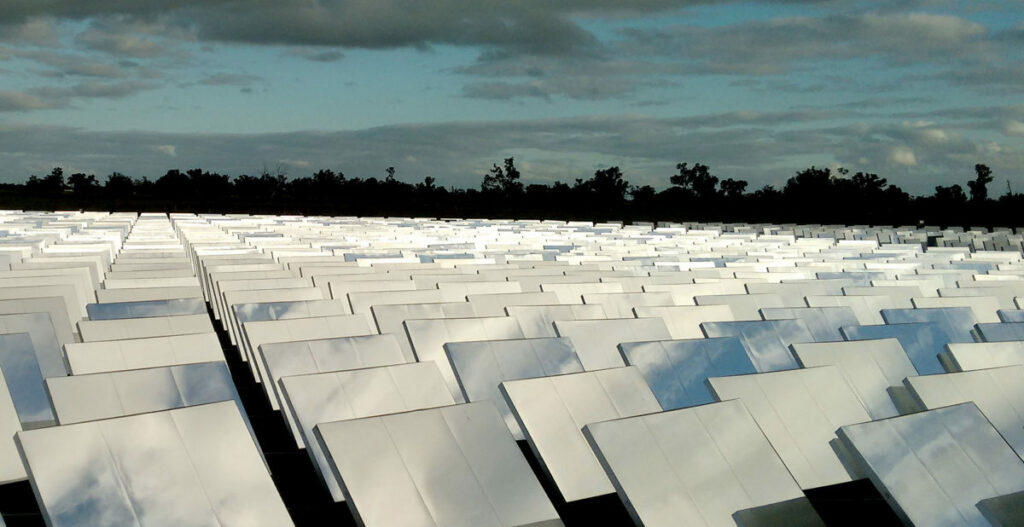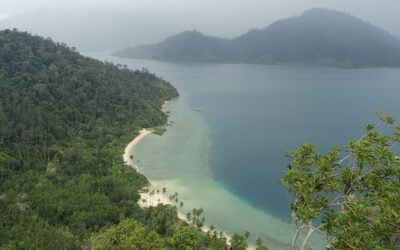
Natron Energy could supply sodium-ion battery storage to a novel ‘integrated hybrid generator’ project in Queensland, Australia.
The US-headquartered startup, one of several major and emerging players developing and commercialising the battery technology, has signed a Letter of Intent (LOI) with Vast Solar, the project’s developer.
Enjoy 12 months of exclusive analysis
- Regular insight and analysis of the industry’s biggest developments
- In-depth interviews with the industry’s leading figures
- Annual digital subscription to the PV Tech Power journal
- Discounts on Solar Media’s portfolio of events, in-person and virtual
The developer’s project on Queensland’s Mount Isa will combine concentrating solar power (CSP), solar PV, battery energy storage and gas engine generators to create what Vast Solar has also dubbed a “solar hybrid baseload power plant,” capable of outputting energy 24/7.
Vast Solar is developing the project together with Queensland state-owned energy company Stanwell, targeting a total 50MW of power generation at what would be known as the North West Queensland Hybrid Power Project (NWQHPP).
According to the state’s government, construction would begin in early 2023, with the various hybrid resources’ construction phases staggered.
A website set up to showcase the power plant plans shows the planned CSP plant linked with a 56MW steam turbine and molten salt thermal storage with 14.5 hours duration, 80MW of solar PV with single-axis tracking system, integrated 52MW/15MWh short-duration battery energy storage system (BESS) and 57MW gas reciprocating engines.
A new 220kV high voltage transmission line would connect the facility to the North West Power System network and its dispatch coordinated by a central control system.
It is one of two hybrid plants in Australia featuring CSP in development by Vast Solar, along with another 30MW plant in Port Augusta, South Australia.
Vast Solar has received a AU$110 million (US$74.5 million) concessional financing commitment from the Australian government for the Port Augusta project, while the company also got a US$2.3 million commitment from the US Department of Energy in October to support its commercialisation of specialised tanks for molten salt thermal energy storage.
In June, Energy-Storage.news reported that the Port Augusta project is being co-developed by Australian thermal storage startup 1414 Degrees. The project had seemed to have hit the buffers when original investors pulled out, prompting Vast Solar to step in and form its joint venture (JV) with 1414 Degrees and revive the plan.
The systems would be Australia’s first-ever CSP plants, Vast Solar claimed, although another company, Photon Energy, is developing a couple of projects based on a technology dubbed ‘thermal hydro’ which combines CSP and solar PV to generate both electricity and heat.
Race to commercialise sodium-ion tech
Natron meanwhile got an undisclosed sum of equity investment from United Airlines earlier this month, to help electrify and therefore decarbonise the aviation group’s ground operations. Natron wants to open a sodium-ion factory in Michigan next year with up to 600MW annual production capacity.
Claiming to be the only provider currently shipping UL-listed sodium-ion batteries and to have overcome limitations around cycle life that have to date held the technology back, Natron also said its products can be made cheaply by leveraging existing production techniques from lithium-ion battery production, as well as being based on more abundant materials.
Other players commercialising sodium-ion batteries include CATL, India’s Reliance New Energy via the acquisition of UK battery startup Faradion, and another Chinese group, HiNa Battery Technology, which recently opened the world’s first gigawatt-hour scale sodium-ion production line with state-owned power company China Three Gorges Corporation.
Sodium-ion could be one potential answer to shortages of lithium-ion batteries, with both raw materials and finished products constrained due largely to rapidly growing demand from the electric vehicle (EV) sector.
Energy-Storage.news’ publisher Solar Media will host the 1st Energy Storage Summit Asia, 11-12 July 2023 in Singapore. The event will help give clarity on this nascent, yet quickly growing market, bringing together a community of credible independent generators, policymakers, banks, funds, off-takers and technology providers. For more information, go to the website.






